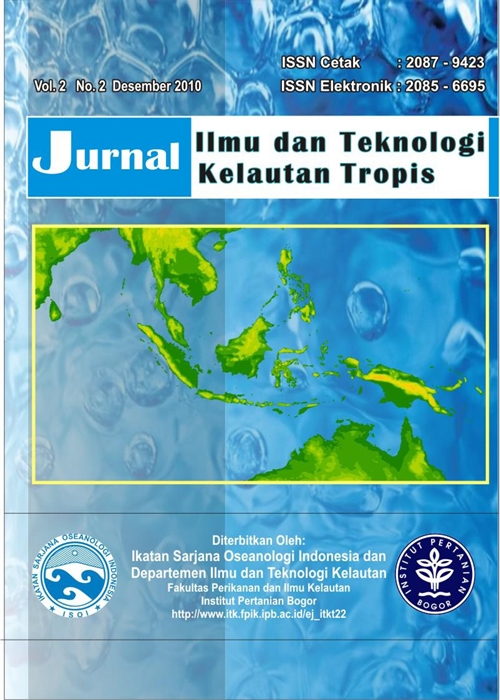CHARACTERISTIC BIOACTIVE COMPOUND OF THE MOLLUSC SYMBIOTIC BACTERIA BY USING GC-MC
Abstract
It has been discovered that mollusca produce a secondary metabolite and in the same time bear its important role in its ecosystems so became a strategic target for the development of noble bioactive substances for marine pharmacology. The current study of mollucs symbiotic bacteria showed that from species of Conus miles, Stramonita armigera, Cymbiola vespertilo and from based on screening of symbiotic bacteria in the Mollusc toward some bacteria , 3 isolates had been had good performance in inhibiting the grow of bacteria and to be the best candidates for a new antibiotic based on result of screening consistency. Size and character inhibiting zone resulted toward test bacteria were TCM, TCAand TOV. The research aims to current study of characteritic of symbiotic bacteria from mollucs that produce a new anti-pathogenic bacteria by using GC-MS method. GC-MS result showed that fraction TCM-6.1 consist of some compounds, that are Nitrogen oxide (N2O) (CAS) Nitrous oxide; Acetic acid (CAS) Ethylic acid; Propanoic acid,2-methyl-(CAS) Isobutyric acid and fraction TOV12.16 consist of compound such as Propanoic acid,2-methyl-(CAS)Isobutyric acid; Butanoic acid, 2-methyl-(CAS) 2-Methylbutanoid acid then fraction TSA8.7 consist of 1,2-Propadiene (CAS) Allene. The research pointed towards the three active symbiotic bacteria seems to be promising since this three candidates potential result for the development of a new antibiotic.
Keywords: Bacteria simbiont, mollusc, anti-bacteria, bioaktif compound
Downloads
The author submitting the manuscript must understand and agree that the copyright of the article manuscript must be submitted/transferred to the Jurnal Ilmu dan Teknologi Kelautan Tropis. This work is licensed under the Creative Commons Attribution-ShareAlike 4.0 (CC BY-SA) International License in which the Author and Reader can copy and redistribute the material in any media or format, and remix, modify and build material for any purpose, but they must provide appropriate credit (citing articles or content), provide a link to the license, and indicate whether there is a change. If you mix, change, or create material, you must distribute your contribution under the same license as the original.



.png)














